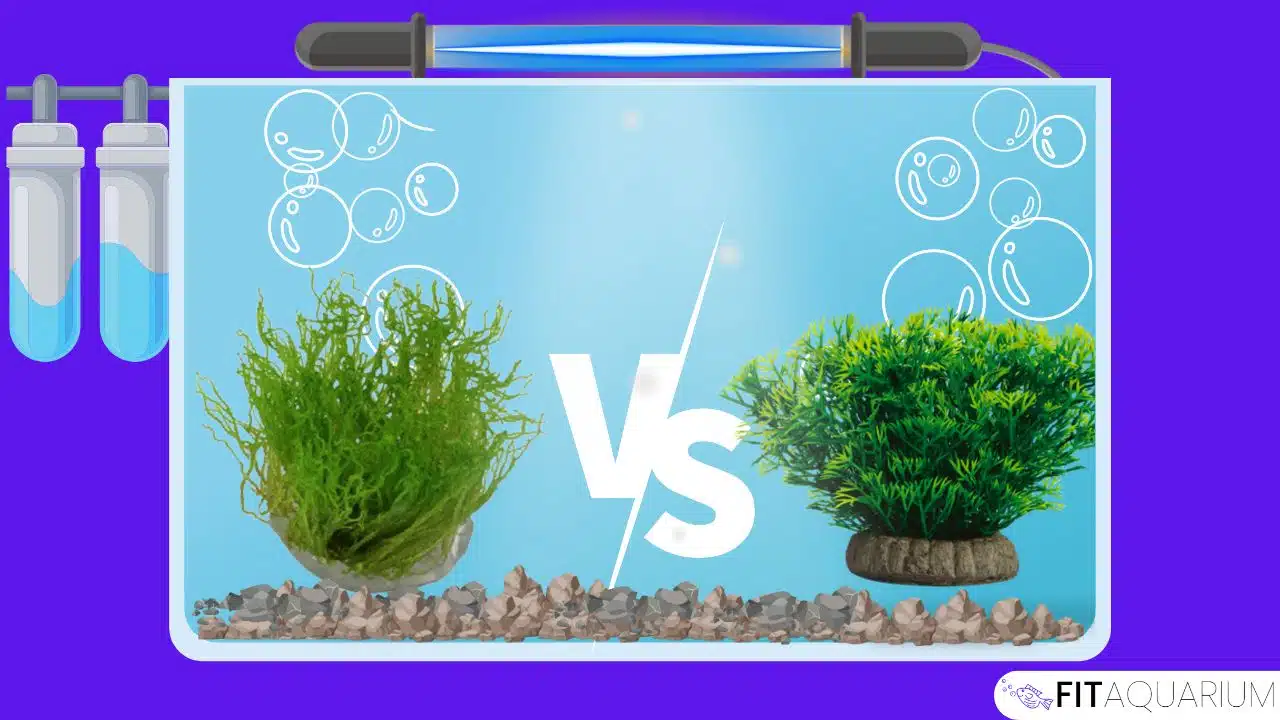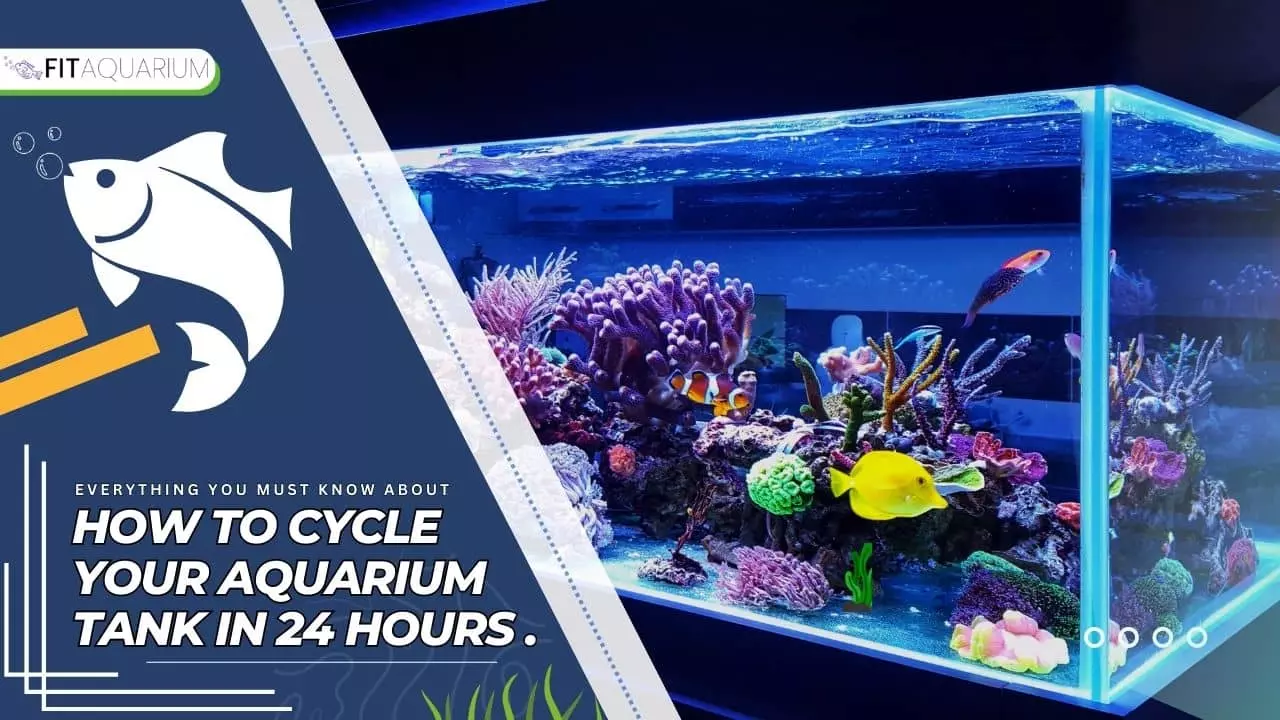It’s exciting to put new fish to tank, but you have to be extremely careful during the procedure. Imagine leaving your own home and relocating to someone else’s – it’s difficult for any living creature, but fish are particularly sensitive in this scenario.
You should have prior knowledge about crucial facts like whether the water of the new tank is suitable for the new coming fish or not.
In this article, we will explore
- Preventive measures before adding new fish
- Step-by-step procedure for the introduction of new fish into the aquarium tank
- Expert tips to follow after transferring the fish
So without further due, let’s explore how you should transport your fish from the shop to your home.
Table of Contents
Transportation of the New Fish
While moving your new companion from a fish store to your home, keep in mind to place the bag in a cool, dark place in your vehicle. Also, try to give your fish bag corners so that it may rest in your car without being overly jostled.
NOTE: It might be possible for your fish to change color when placed in the bag during this transfer. But don’t worry, it will regain its original color after being shifted to a new aquarium tank.
Quarantine your New Fish First
To monitor the fish for sickness or illness, quarantine the new fish in a separate aquarium tank for at least two weeks before introducing them into an existing tank. Keeping the new fish in a separate tank will prevent disease from spreading to your existing tank.
Make sure your separate container is at least 5 to 10 gallons in capacity. Include an old sponge filter from an aquarium. The idea for this is simple to stock your tank with beneficial bacteria.
Make sure to transfer your new companion to the quarantine tank by following the same steps, you’ll use for moving the fish into a permanent aquarium. And don’t worry, all these steps will be discussed with you in detail, later in this article.
Assume you don’t have a quarantine tank for your new fish. In that situation, you must use extreme care while getting your fish. Check to see whether it is unwell or has any symptoms of illness. Also, plan to get from one of the most reputable pet stores in your local area.
Note: It is also advisable to first cycle your tank before adding new species to it.
Preventive Measures Before Adding New Fish to Tank
Now we will discuss some preventive measures you should follow before adding your buddy to the aquarium tank.
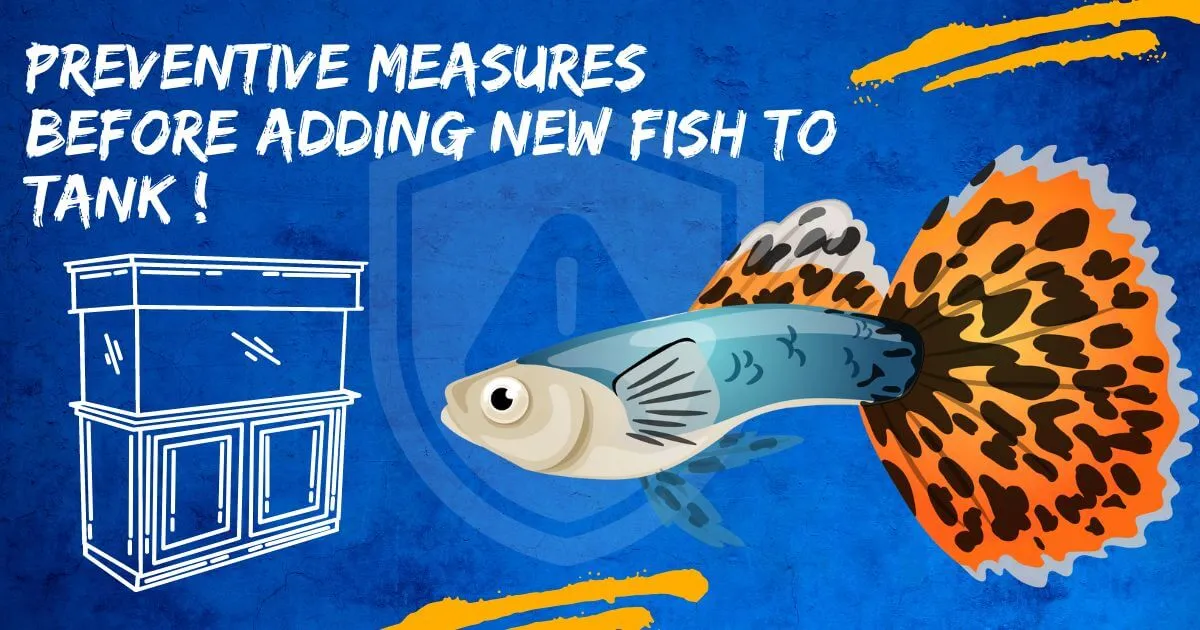
1. Compatibility with Already Present Species
Before adding a new fish to an existing tank, make sure it’s compatible with the species currently there. You can seek guidance from a veterinarian or just discuss it with the owner of your pet store since they usually have this information.
When analyzing the compatibility of your new fish, keep the following points in mind:
- Choose freshwater fish if your tank is set up with Freshwater. Similarly, if you’re going to have a salty or brackish water tank, select species that grow in such habitats.
- Research online for appropriate tank mates for the fish you currently own. This contributes to a peaceful tank community.
Read Also: Angelfish Tank Mates: A Comprehensive Guide for Compatibility
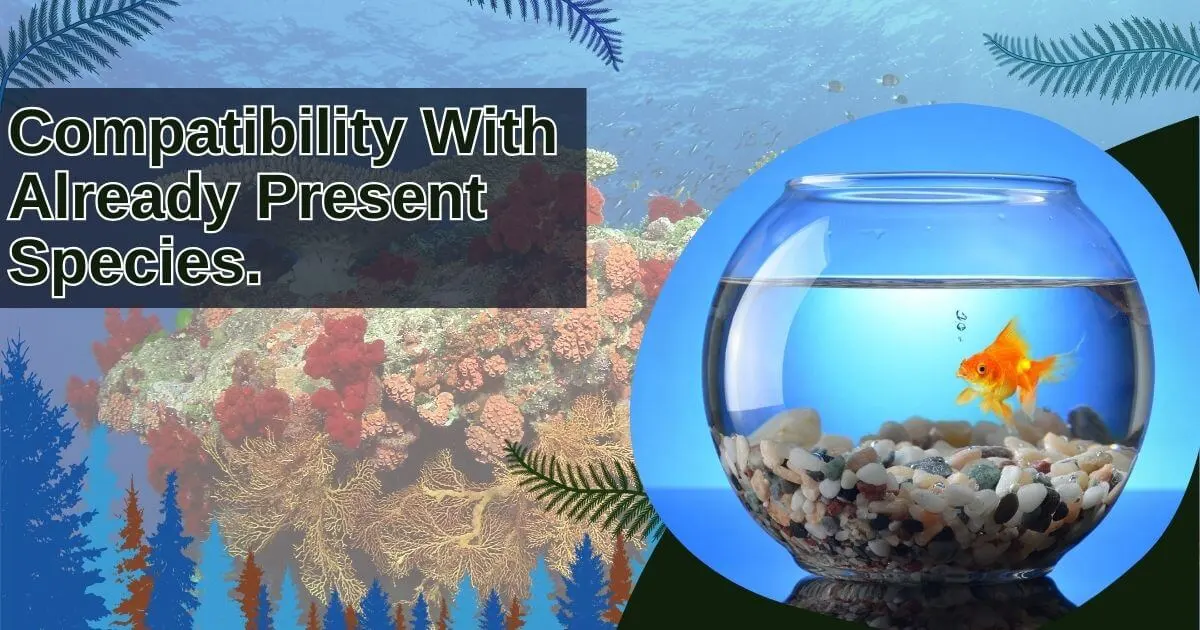
I personally use this tip for myself. When I was about to bring home an axolotl for my aquarium, I checked to see if I could keep it in the same tank that already has a mudpuppy. Then, after doing research and confirming with a vet about mudpuppy vs axolotl, I found my answer.
- Avoid including species that are known to be opposing one another.
- Don’t include the fish that have a habit of nipping at the gills or fins of others. Similarly, avoid including fish that are prone to being nibbled.
- Never combine tropical and marine fish since their habitat requirements are vastly different.
Having compatible fish in your tank sets the tone for a peaceful underwater habitat.
2. Tank Size
Your fish requires a lot of room to swim around. As a result, one of your primary duties will be to ensure that there is sufficient space for them. Tank sizes can range from 0.5 to more than 200 gallons. Remember that the larger the tank, the more maintenance it needs.
The size of your tank is determined by the type of fish you choose. A tank with a capacity of up to 20 gallons, for example, is adequate for a three-striped African catfish (approximately 5 inches long). The giraffe catfish, on the other hand, may grow to be 28 inches long and requires at least a 125-gallon tank to itself.
3. Hiding Spots in Your Aquarium Tank
Before introducing new fish to your aquarium tank, make sure it has some hiding spots. These hiding spots will help the newcomer to locate a safe haven during the initial phase. This can assist in reducing the stress that is commonly experienced on the first day of transfer. These hiding spots can easily be formed by carpeting your tank with mosses like java moss or flame moss.
4. Water Quality
Water quality is a critical aspect of the tank environment that must be seriously assessed before adding new fish. It is important that you constantly monitor and record the suitable pH level and water temperature for both new and existing tank residents.
Water temperature tolerance can often be greater in freshwater tanks; however, temperature ranges are noticeably shorter and more precise in saltwater tanks.
5. Away from Direct Sunlight
Keeping the aquarium tank away from direct sunlight will help reduce stress in newcomers. It will also help to maintain a tranquil and calm atmosphere for existing tank inhabitants. Consider turning off the tank lights and lowering the lighting in the area where your tank is placed.
6. Redecorations OR Rearranging Existing Ornaments
Consider rearranging or redecorating current ornaments before adding new fish to your aquarium. This modest action may help reduce territorial conflicts among existing tank dwellers, making the transfer easier for everyone.
It also gives a sense of freshness to the surroundings, which may pique the interest of your aquatic buddies.
How to Add New Fish to Tank?
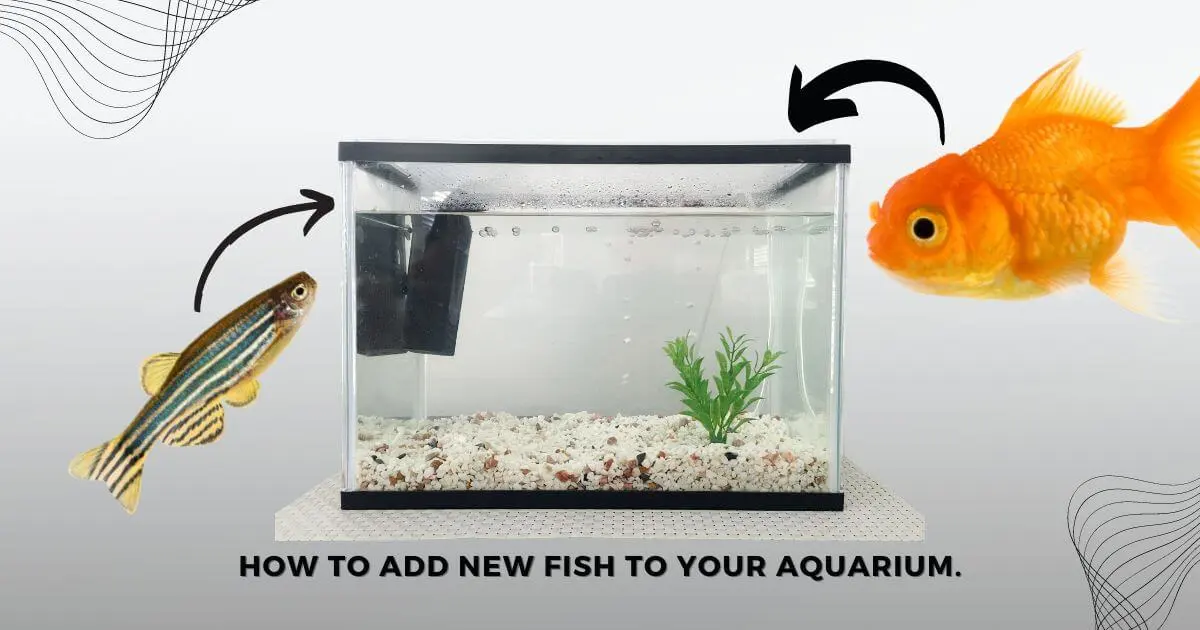
Now that you’ve taken precautions, let’s get to our main goal: ‘How to Add New Fish to Tank.’ Here is a step-by-step guide. Pay close attention to each step to guarantee your new buddy’s safe adapting to your tank.
- Take all the preventive measures discussed earlier, paying special attention to turning off the aquarium lights.
- Consider feeding the existing fish in the tank before proceeding, as this can help calm the resident species.
- Place the sealed bag containing the new fish on the water surface of the tank. Allow it to float undisturbed for approximately 15 minutes. This step helps to equalize the water temperature in the bag with that of the tank.
- Gently open the top of the bag without letting any water in or out.
- Test the pH of the water in the bag and the tank water.
- Compare the pH differences in both waters. For instance, if the bag water has a pH of 7 and the tank water is at 6.6, the difference is 0.4 pH.
- Take half a cup of tank water and pour it into the open bag.
- Wait for 15 minutes and repeat this process until the pH levels in the bag match the tank water.
Note: Consider noting down the pH after each repetition, or at least after every 2 repetitions. - Now finally it’s time to transfer your new buddy to the tank. Use a net to carefully transfer the fish from the bag to the tank.
- If possible, use a shrimp net for smaller fish. If a larger net is the only option, place it over a bucket and gently pour the bag water into the net.
- Swiftly transfer the fish from the net into the tank.
- Discard the water from the bag into the sink. Do not add it to the tank.
- Keep the aquarium lights off for several hours to help the new arrivals adjust to their surroundings.
Expert Tips to Follow After Transferring the New Fish

Allow me to share some valuable insights I’ve gained through my experience with aquariums and the process of introducing new fish to my tank over a period of time.
- Think about introducing a pair of new fish species instead of just one. This can reduce stress and encourage improved mental health among newcomers, resulting in a more peaceful environment for everybody.
- Don’t overcrowd your aquarium by introducing too many fish at once. Overcrowding may result in territorial disputes and increased hostility among your aquatic inhabitants.
- Avoid doubling your aquarium’s fish population all at once, as this might have the same adverse effects as indicated above. A happy aquatic community requires gradual additions.
How Long Should You Wait for the Second Addition?

The timing of adding a second pair of fish to your aquarium is determined by several factors, including the size of your tank, the exact species you intend to introduce, and the present residents. In general, it’s best to wait two to four weeks before considering a second addition. This time allows the tank’s biological filtration to acclimate to the increased bioload from the initial batch of new fish and aids in the maintenance of steady water parameters.
Conclusion
Finally, adding additional fish to your aquarium requires some well thought measures and precautions. It’s a procedure that requires attention to detail and patience, from transporting and quarantine to compatibility checks and water quality inspections.
By following these guidelines and adding expert guidance, you can develop a peaceful underwater habitat that protects both your current aquatic individuals and the newest buddies.
For you to better understand the whole procedure, here is also a video by Prime Time Aquatics
Frequently Asked Questions
Here are some of the burning questions around the globe on acclimating new fish to your aquarium.
How long do you have to wait to put fish in a new tank?
Ideally, wait at least 24 to 48 hours after setting up a new tank to allow the water temperature and parameters to stabilize. However, if using live plants, waiting for them to establish may take longer, typically around a week.
Which fish to add to tank first?
Begin with hardy and resilient fish species known for their ability to withstand fluctuations in water conditions, such as small tetras or danios. Introducing these fish first helps establish the nitrogen cycle and ensures a stable environment for more sensitive species later.
How do I prepare my fish tank for new fish?
Before adding new fish, ensure the tank’s water parameters match those preferred by the species you intend to introduce. Perform partial water changes, check filtration systems, and acclimate the fish properly to prevent shock. Quarantining new fish before introducing them to the main tank can also prevent disease spread.
How long should new fish stay in the bag?
Allow the fish to float in the sealed bag on the water surface for around 15 to 20 minutes to equalize the temperature. Afterward, gradually introduce small amounts of tank water into the bag over the course of 30 to 45 minutes to acclimate the fish to the new water chemistry.
How long do you have to keep the lights off when adding new fish?
It’s advisable to keep the tank lights off for around 24 hours after adding new fish. This minimizes stress on the fish, allowing them to acclimate to their new environment without additional disturbances. After this period, gradually reintroduce light to the tank to simulate a natural day-night cycle.


